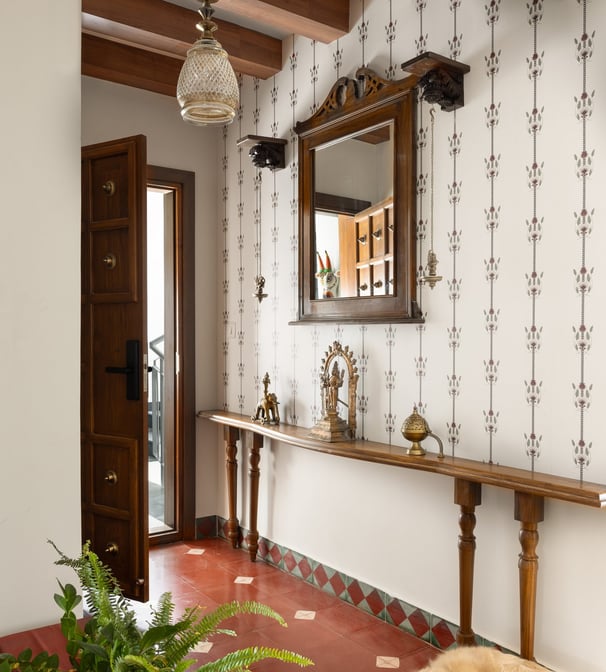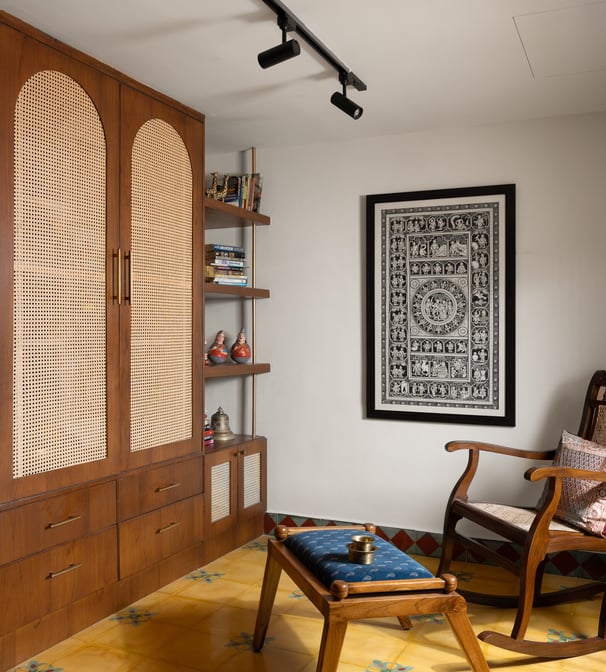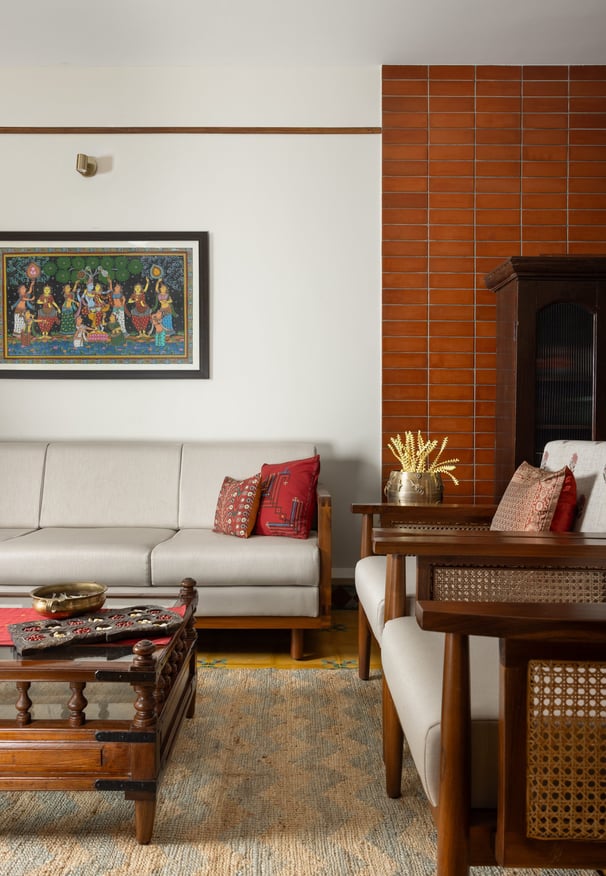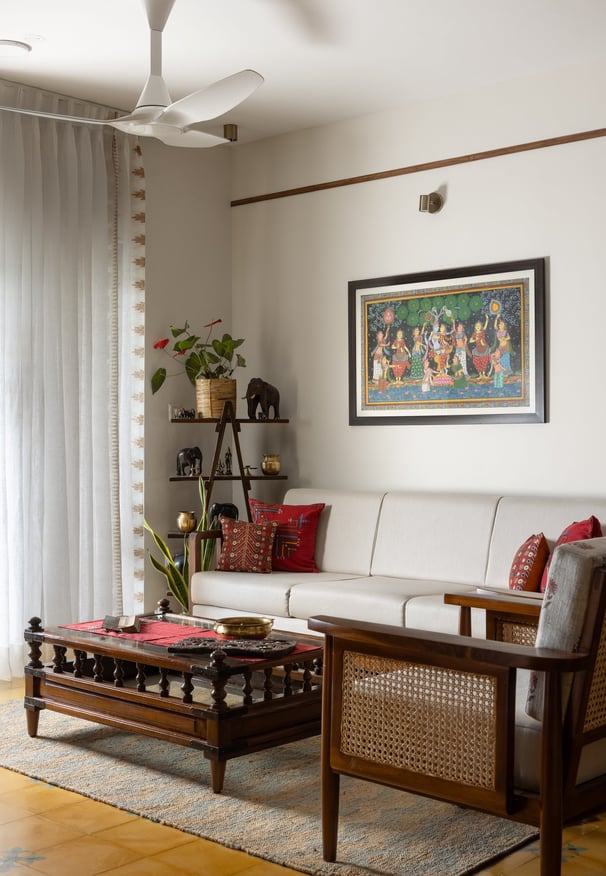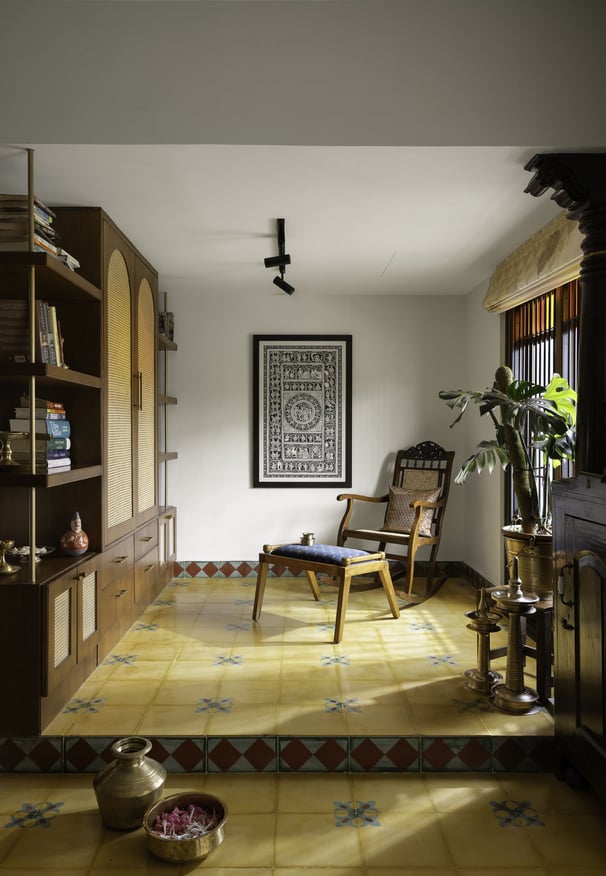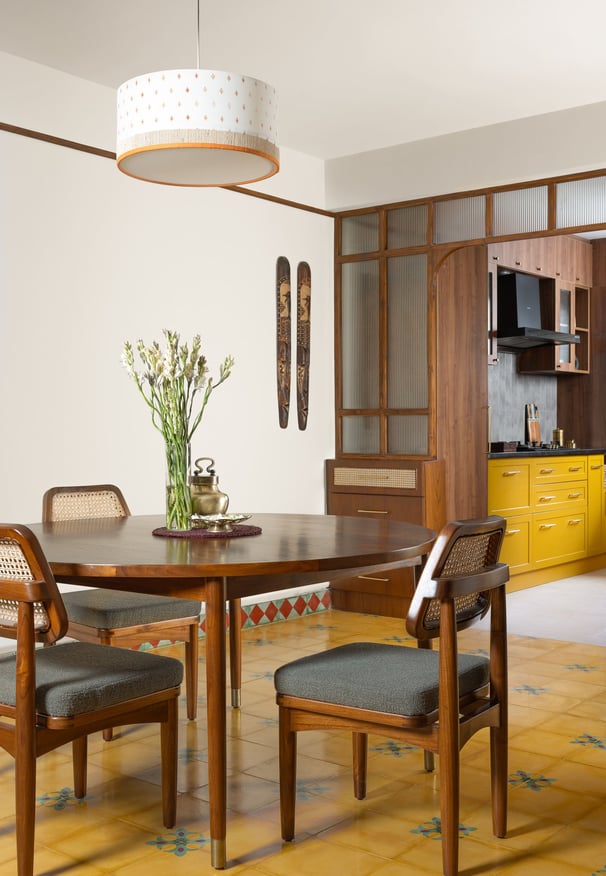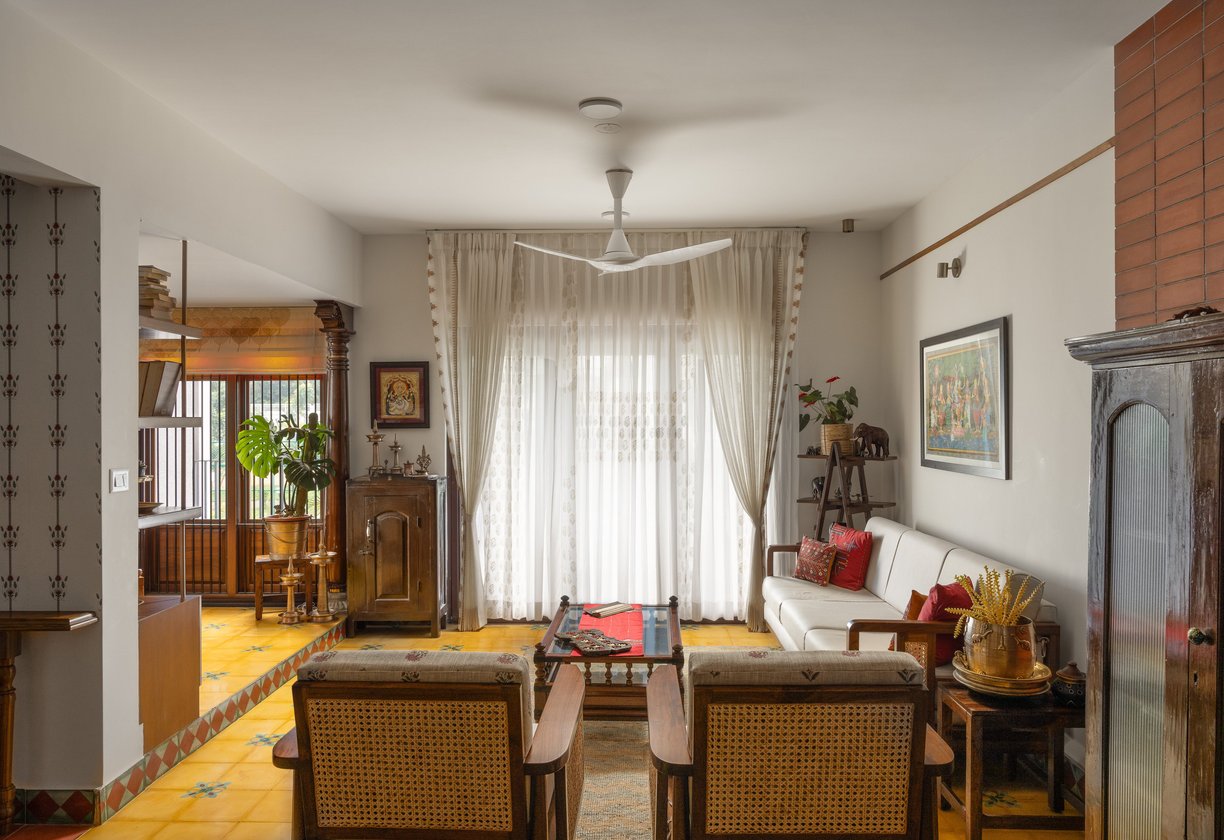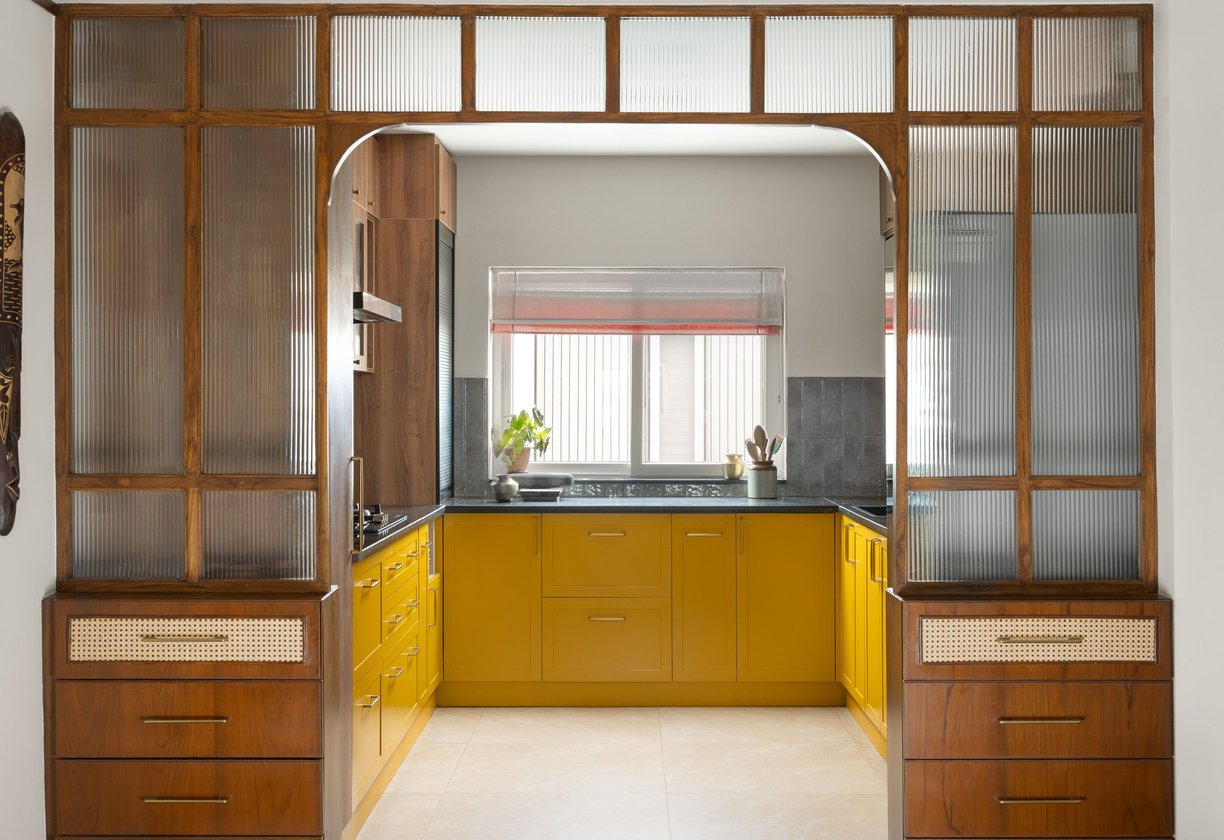THE HEIRLOOM PROJECT
LOCATION : ASSETZ SOUL AND SOIL, BANGALORE
PROJECT COMPLETION : 2024
The Heirloom Project pulses with the vibrant personality of its inhabitants: Venkat, a chartered accountant, is a passionate cyclist and bird-watcher; his wife Jaya educates young minds, immersing herself in literature and expressing her creativity through self-taught art; and their young son, who follows in his mother's artistic footsteps nurtures a growing passion for drums. The household is made complete by Venkat's elderly mother and their two dogs, creating a living canvas of their collective personalities and pursuits.
With family origins in Palakkad and a Tamil-Brahmin upbringing, Jaya and Venkat were drawn to the allure, intricate artisanship, and intentional traditionality witnessed in spaces they interacted with in their early years.
Chettinad abodes embodied just that! With their breezy Thinnais (porches), courtyards, immaculately carved colonnades, Belgian stained glass, sheen-enveloped lime-plastered walls, and cameos of brass and earthenware, the family felt an inimitable tether forming in their minds, an image they would aspire to reprise in a modern light and bring alive within the walls of their new dwelling.
Sited in Bangalore’s northern city limits, the home sits huddled between its row housing counterparts, its exposed eastern and western façades welcoming sunlight indoors. A teak main door studded with brass accents reveals the colour and pattern-doused vestibule, a fitting introduction to the home’s personality. An array of wood ceiling rafters meet the wallpaper-enwrapped walls, reminiscent of hand-strung flower maalais (garlands). A sleek teak console with carved legs stretches along the space’s edge, crowned by an antique mirror above. A petite bench flanks the area, culminating in a planter box. A sea of garnet-hued Athangudi tiles delineates the zone, the handcrafted tiles a leitmotif of architectural heritage in the Deccan and a profoundly emotive colourway.
PHOTOGRAPHS : ROSHAN SATISH PALIATH
NARRATIVE : LAVANYA CHOPRA
A seamless extension of the living, the dining area whips up a snug nook for the family to gather and gaze into the sunny expanse of the kitchen beyond. The bespoke Tusker Katha ensemble features a teak round table and cane and wood chairs. The olive green, bouclé-clad chairs riff off the abstract floral motifs in the flooring, injecting colour into the pared-down milieu. The drum-style pendant by Olie Lighting dabbles in the realm of Indian-inspired patterns and textiles, bringing warmth to the space.
The family’s antique crockery cabinet rests in the transition area between the living and dining areas, positioned against a brick-clad feature wall, fostering a sense of visual pause along the room’s perimeter.
An archway crafted in wood and fluted glass is a membrane between the dining area and the kitchen. Drawing in light and views of the neighbourhood, the space possesses a vibrant persona, a heady mix of canary on the cabinets, wood millwork, grey subway tile backsplashes, and classic black granite for work surfaces.
A home speaks a language audible to all but only deeply interpreted by you. The objects within are roadmaps into a storied past, each line, crack, and trace of patina a reminder of all that has been and continues to thrive within our hearts and walls. The Heirloom Project resembles a bookmark in the family’s lore, allowing the past to stand still while one passionately continues to author the present.
The deep reds give way to a gleaming carpet of ochre, a tessellated arrangement of Athangudi tiles that claim the canvas of communal spaces. A little bit of the old and much of the new converge within the living room like two comrades engaged in a wistful reunion. Owing to the vibrance of the floor’s expanse, the furniture, upholstery and wall finishes play second fiddle, cohesively binding the room with their neutrality. Religious practices are central to the family’s routine, and a dedicated space to accommodate them was a given. The prayer area was created at an elevated level moored off the living room to create an intentional transition of gravity within spaces. A traditional Kannaadi-Jannal (glass pane-lined window) punctures the space, strobes of light resembling spun gold filtering through its yellow panes and metal grills, harking back to an image of ancestral homes. The sanctum rests behind the veil of cane-lined pocket doors fringed by bookshelves. A classic rocking chair by Maram Furniture and an upholstered footstool by Tusker Katha concoct a dreamy reading corner perched by the window. A collage of brass lamps (Villukugal), a brass bucket as a planter, and a wood stool inhabit a corner, underscoring the heritage-led intent.

